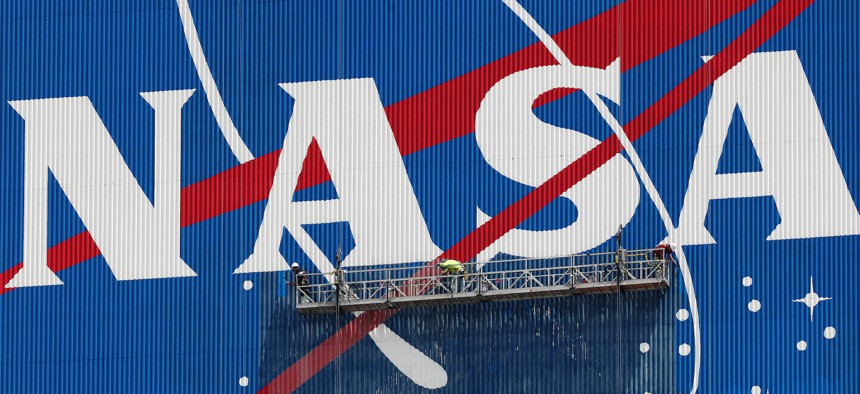NASA struggles to improve workforce diversity

Workers repaint the NASA logo on the Vehicle Assembly Building at the Kennedy Space Center. Joe Raedle/Getty Images
The space agency has been trying to improve diversity and inclusion for over a decade, according to a new inspector general report, but its workforce still lags the federal government in employment of women and minorities.
Despite over a decade of efforts to improve diversity and inclusion in the NASA workforce, the space agency has made little progress, according to a new inspector general report.
Although the agency made a commitment to improving diversity and inclusion over a decade ago, releasing a strategic plan for diversity and inclusion in 2012, the watchdog found that the demographics of NASA's workforce remain mostly unchanged, with only small increases of 1% to 2% for some demographic groups.
In fiscal year 2021, women made up around 35% of the NASA workforce, compared to the federal workforce overall, where women are 45% of the workforce.
Women make up only 25% of the science and tech workforce at NASA, which makes up about 67% of NASA's 18,000 strong workforce, compared to the 31% representation in the federal government's science and tech workforce overall.
Racial and ethnic minorities constituted 30% of the NASA workforce in fiscal year 2021, as compared to 39% of the federal workforce.
In the science and tech workforce in particular, racial and ethnic minorities represent 26% of the workforce, as compared to 30% across the government science and tech workforce, according to the report.
The report also found a "significant decrease" in the hiring of veterans over the last 10 years.
The agency's diversity across its leadership ranks—including the top General Schedule levels, the senior executive service and senior leader levels—has also stayed "essentially unchanged," with the agency struggling to promote women and minorities into the leadership ranks.
As for why the agency wasn't able to make improvements despite its commitment to the diversity of its workforce, the report cited a "siloed approach" and a focus on compliance and reporting instead of baking diversity, equity, inclusion and accessibility into "all agency activities."
The Office of Diversity and Equal Opportunity associate administrator told the inspector general that another problem is that the agency doesn't understand the root cause of why women and minorities aren't getting promoted to leadership; the agency is planning to do barrier analyses to identify the blockers.
Another issue is a lack of DEIA workforce data, according to the report.
The agency is trying to solve that problem with a new Enterprise Data Platform that would replace currently isolated data systems on applicant and demographic data, although the report notes that so far the system's rollout has been "plagued by inconsistent funding, indecision and delays."
Other problems: gaps in professional development and training opportunities to prepare employees for senior roles and the lack of an agency-wide mentoring program, according to the report.
The agency did add DEIA to annual performance reviews for agency managers—and elevated DEIA efforts to the administrator and deputy administrator level—in 2021, according to the report, which notes that the results of NASA's "renewed focus" on DEIA "remain to be seen."
The watchdog gave the agency seven recommendations, including DEIA training for hiring and promotion managers, setting up an agencywide mentoring program, and more. NASA concurred or partially concurred with all of these.
NEXT STORY: Catalyst Award



